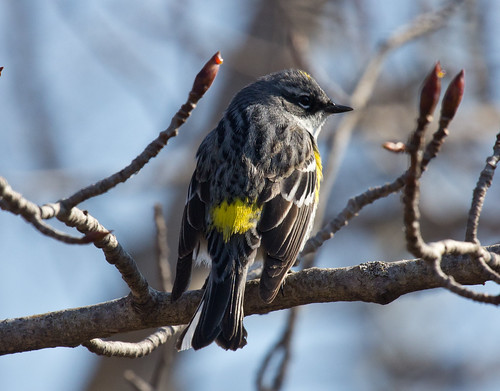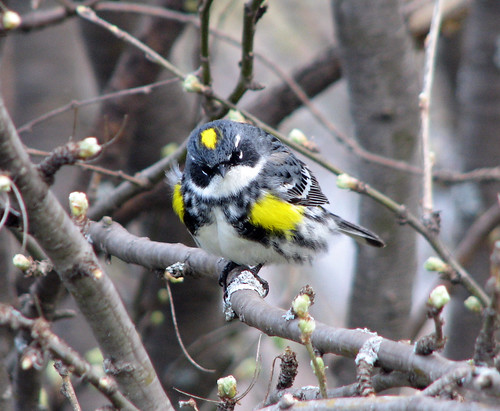
In May 1975, the year I started birding, I saw 5 species of warblers. In the summer, when I took my first ornithology class, I added 4 more. And then in the week leading up to Labor Day, Russ and I headed to Port Wing for a little break before fall classes began. And even with my novice skills, I managed to find three new warblers, including one that in retrospect I’m surprised I didn’t figure out in the spring, because it’s the most abundant warbler of all, the Yellow-rumped Warbler.
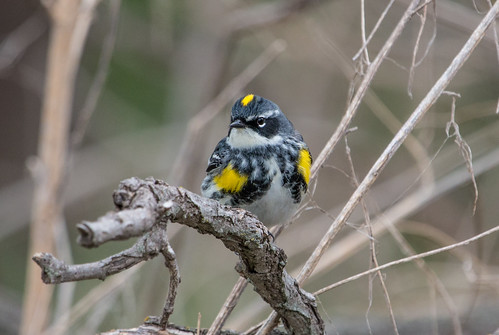
Yellow-rumps have a soft, fairly unobtrusive song that they seldom sing until they reach their breeding grounds, so I’m not surprised I didn’t learn the song that first year. But they have a very distinctive chip note that sounds rather like the tsking of an annoyed math teacher, and they are so very abundant, and arrive noticeably earlier than the other warblers, so it does seem odd that I never picked one out in the spring. If I had, I’d have listed it in my lifelist the way it was listed in my trusty Golden Guide and my Peterson Guide—as the Myrtle Warbler. But by September 2, when I saw my first one, I’d already taken ornithology, where I learned that the Myrtle and Audubon's had been lumped into a single species, the Yellow-rumped Warbler. So that’s the way it appeared on my lifelist from the start.
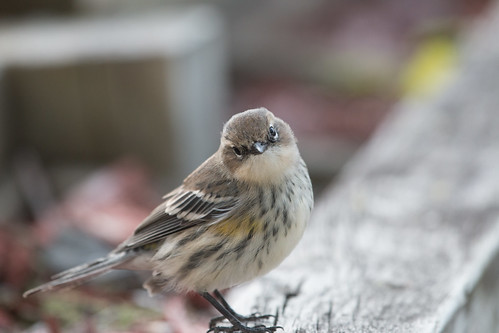
1975 seems so very long ago, but the one constant is that the Yellow-rumped Warbler stayed a constant single species. Research published in 1973 led scientists to believe that Myrtle and Audubon’s Warblers belonged to the same species, because the two hybridize fairly often in the narrow area where their respective ranges overlap.
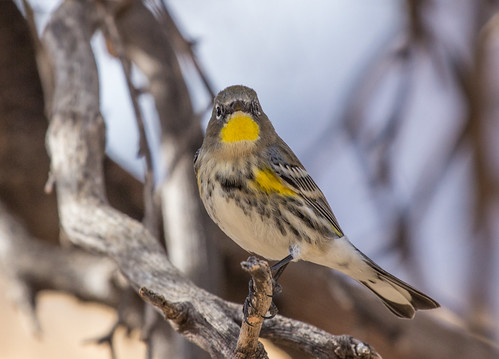
Now, 43 years later, a new paper has been published in The Auk reporting that those hybrids, like mules, aren’t genetically fit enough to reproduce, so hybrids have never spread and melded the two forms genetically. The researchers conclude that the two forms are, indeed, fully separate species as people originally believed.
One of the researchers, David Toews, did the genetic work as a post-doc at Cornell, so I got it on very good authority in 2009 when I worked there that the species was going to be split in the near future, but solid peer-reviewed research takes time. And the results turn out to be even more interesting than I thought. Based on significant DNA as well as several behavioral differences, there are actually three unique species bundled into that yellow-rumped group. North America’s Myrtle and Audubon’s Warblers are what people originally thought—two distinct species—but another separate population, found only in and very near to Guatemala, also deserves full species status as “Goldman’s Warbler.” A fourth distinct population, fairly closely related to Audubon’s Warbler genetically, is restricted to the mountains of Northern Mexico. When taxonomists examine the data, they will probably make that one, the Black-fronted Warbler, a subspecies of Audubon’s Warbler rather than its own species.
The paper was published on August 24 in The Auk, the premier, peer-reviewed journal of North American ornithology. But that doesn’t mean that those of us who have seen both Myrtles and Audubons get to add a new species to our life lists just yet—that will have to wait until the next time the North American Classification Committee meets to create the next AOU Checklist supplement, something that happens just once a year. But next year, one morning I’ll wake up, check the news, and discover that without having gone anywhere, I’ve added a brand new lifer—one of the unexpected joys of birding.
